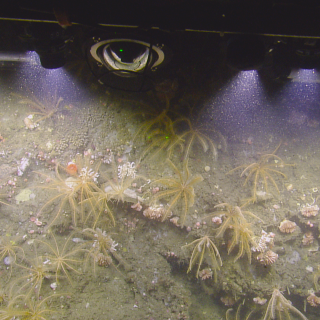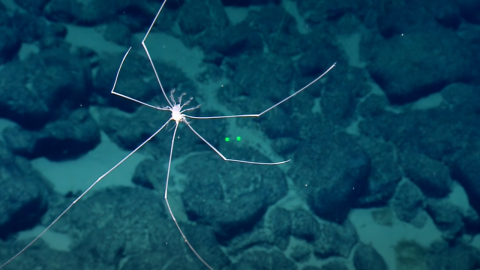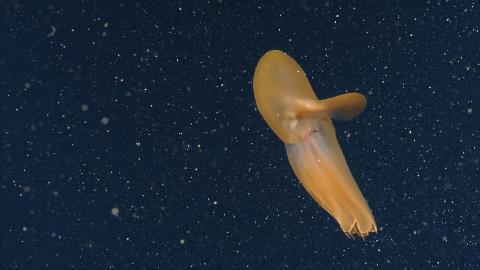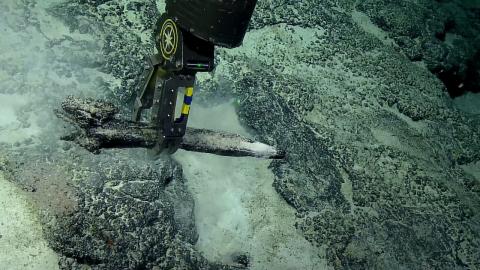Sampling Methane Seeps of the Olympic Coast
We love meeting deep-sea organisms during our dives, but a core component of our exploration mission is collecting biological, geological, and chemical samples that allow researchers from around the world the opportunity to study one of our planet’s most under-explored regions – the seafloor!
While exploring in and near the Olympic Coast National Marine Sanctuary, our team came across many unique features and animals found within the steep walls of Quinault Canyon, a region that is also within the protected harvest areas for the Quinault Indian Nation. Working with Oregon State University researchers funded by the NOAA Office of Ocean Exploration and Research, the team aboard Nautilus conducted extensive sampling of these methane seep regions.
For sediment sampling, the most frequently used technique is the push core. A push core is a clear tube with a handle for the manipulator arm to hold. As its name suggests, the core is pushed down into the sediment and then carefully pulled back out, complete with sediment. This method allows the horizontal layers of sediment and infauna to be preserved, for further analysis including for composition. The core is then pushed into a holder or “quiver” with a rubber stopper on the bottom to contain the sediment until the ROV is recovered at the surface. Our team will also use a scoop to collect sediment where layering is not important or use the slurp hose when collecting rubble.
Also spotted during our dive were bountiful white clam beds that pointed our researchers to the discovery of previously undocumented methane seeps! This chance revealing highlights just how many seeps must be in these waters that we don’t even know existed.

Olympic Coast NMS & Gradients of Blue Economic Seep Resources
The Olympic Coast National Marine Sanctuary is a biologically diverse and ecolog



